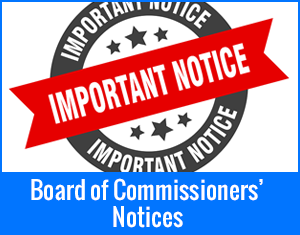
- By Todd Luck
- Posted Monday, February 11, 2019
Pollen Monitoring Season has begun
Forsyth County Office of Environmental Assistance and Protection (EAP) will begin its 2019 Pollen Monitoring Season today.
Pollen reports are made weekdays by 3:30 p.m. on the EAP website (http://www.forsyth.cc/EAP/pollen.aspx) and on Forsyth Pollen’s Facebook (https://www.facebook.com/ForsythPollen/) and Twitter (https://twitter.com/ForsythPollen) accounts. Findings include a pollen count and 3-day pollen forecast. The report describes the amount of pollen from tree, grass and weeds using a pollen rating scale of Absent, Low, Moderate, High and Very High. When possible, it also details the amounts of specific pollen types that are found, like the cedar/juniper tree pollen that’s common right now.
Plants produce pollen as part of the natural process that leads to new seed production. Airborne pollen can cause discomfort to allergy sufferers when it comes into contact with their nose, throat or eyes. A test by a doctor can determine what type of pollen allergy sufferers are reacting to. The pollen forecast can help them minimize their exposure to pollen they’re allergic to.
“One of the hopes of our program is by putting information out about the pollen and the types of pollen, that people can use that to make decisions about what to do with their day-to-day activities,” said Rob Russ, EAP Senior Environmental Specialist.
EAP has numerous tips to minimize pollen allergy symptoms:
- Stay indoors during high pollen counts or on dry breezy days when pollen is easily carried by the wind.
- Keep car windows closed when driving.
- Keep your home’s windows closed and use air conditioning to filter indoor air.
- Do not hang laundry outside to dry because this will allow pollen to accumulate on the fabric.
- Avoid mowing because it can stir up pollen. If you must mow, wear an air filter mask.
- If you’ve been outside when pollen levels are bothersome, bath and wash your hair before going to bed to avoid getting pollen on your sheets and pillow.
- Pollen can accumulate on pet fur and clothing, so frequently wash both to reduce indoor pollen exposure.
- Discuss your allergies with a doctor to learn what medical treatments may be most appropriate for your particular allergies.
A common misconception is that colorful flowers like, tulips, roses or dogwoods produce airborne pollen. They actually produce pollen that’s too heavy and sticky to be carried by wind and is instead carried by bees and other insects. Plants that disperse their pollen by wind and cause allergies typically have small, inconspicuous flowers, shaped to maximize the release of pollen into the air.
Most pollen grains are smaller than the width of a human hair. To measure them, a Rotorod machine that hangs from the top floor of the Forsyth County Government Center runs from 3 a.m. to 2 p.m. each weekday. The machine spins around two tiny rods covered in silicon grease, which traps pollen grains. The rods are collected each afternoon by an EAP employee who then examines them under a microscope and counts the pollen grains collected for the daily pollen report.
The local pollen season usually starts in mid-February when temperatures are warm and cedar pollen first appears. Oak pollen peaks in April, resulting in the year’s highest pollen densities. Maple, pine and birch pollen are also plentiful during tree pollen season, which ends in early June. Grass pollen is most prominent from May into September. Weed pollen increases throughout May and into June. Overall pollen levels are usually low in July. Ragweed pollen is very significant from late August through mid-September. The first hard frost of autumn typically brings the pollen season to a close in late October.
For more information and to see the pollen report visit http://www.forsyth.cc/EAP/pollen.aspx.











